The Rail Data Forum 2025 showed that the rail industry has moved beyond experimentation to actively investing in semantic technologies and knowledge graphs as the solution to fragmented data management systems.
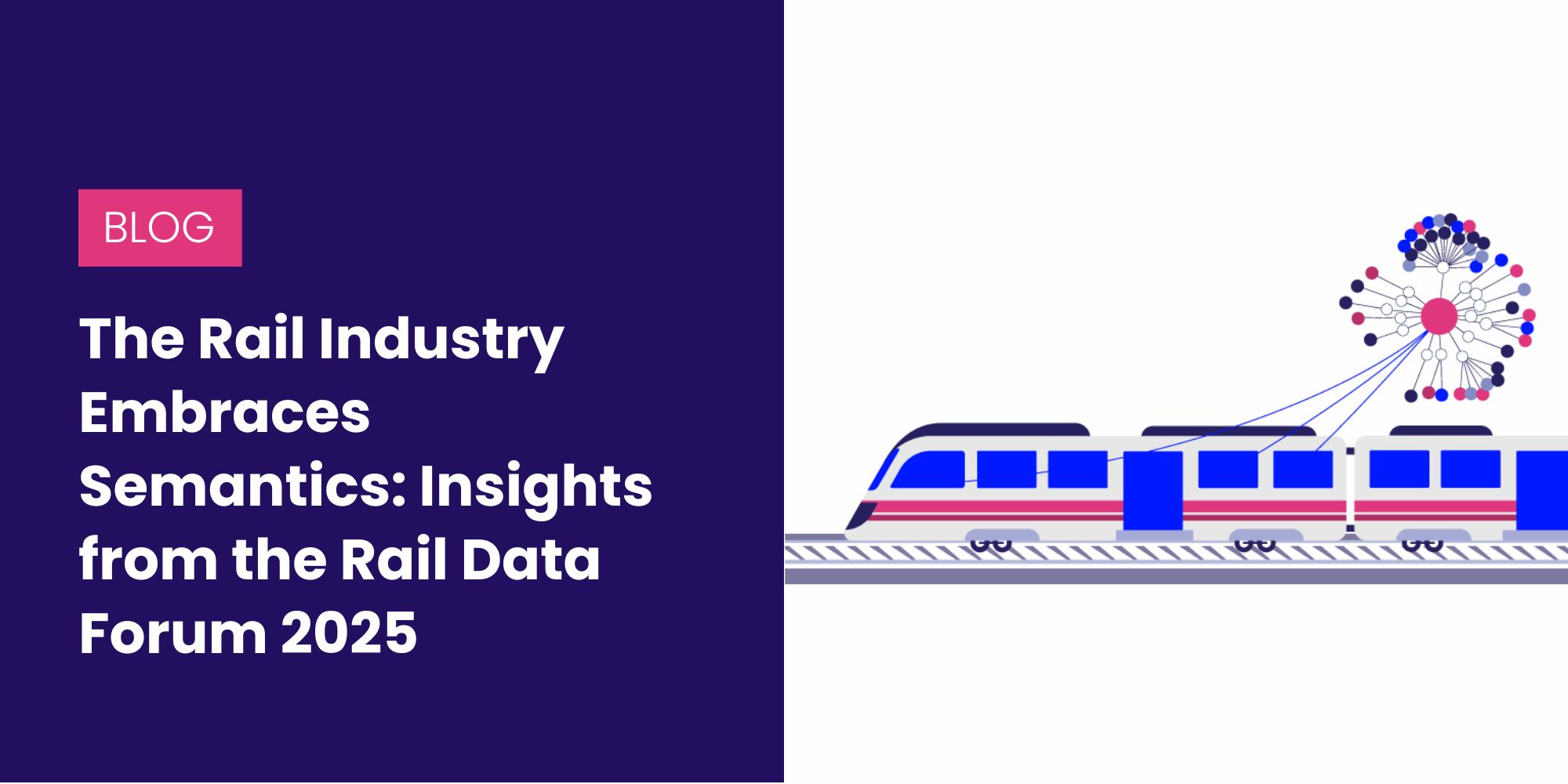
The rail industry is undergoing a digital transformation driven by the need for better data interoperability, smarter infrastructure management, and more efficient operations. The sector has a large number of physical assets (vehicles, terminals, tracks, signaling equipment, and more) and digitalization is key to increasing their efficient use. And, just as legacy approaches to physical assets management hinder efficient maintenance, planning, and decision-making, siloed rail data kept in incompatible formats is a big concern for the industry.
Since the establishment of the European Union Agency for Railways (ERA) in 2004, the EU has been steadily moving towards rail interoperability in Europe. Together with certification, safety and security, compatibility, consumer services, and many other tasks, ERA is responsible for ensuring rail data interoperability. High-quality interoperable data is essential for connecting the rail business across borders and with other modes of transport. So, like many other players in this space, ERA has turned to the semantization of data.
Semantic technologies and knowledge graphs provide a unified, machine-readable representation of rail data across different systems and organizations. This data-centric paradigm uses W3C-compliant standards like RDF, OWL, SHACL, and SPARQL to enable asset interoperability, data reusability, validation, and compliance.
A great industry gathering
What we witnessed at the Rail Data Forum 2025 in Cluj Napoca, Romania (June 11-13, 2025) was not just interest in semantic technologies and knowledge graphs. It was an active investment and implementation — a significant validation of Graphwise’s approach to data and knowledge management.
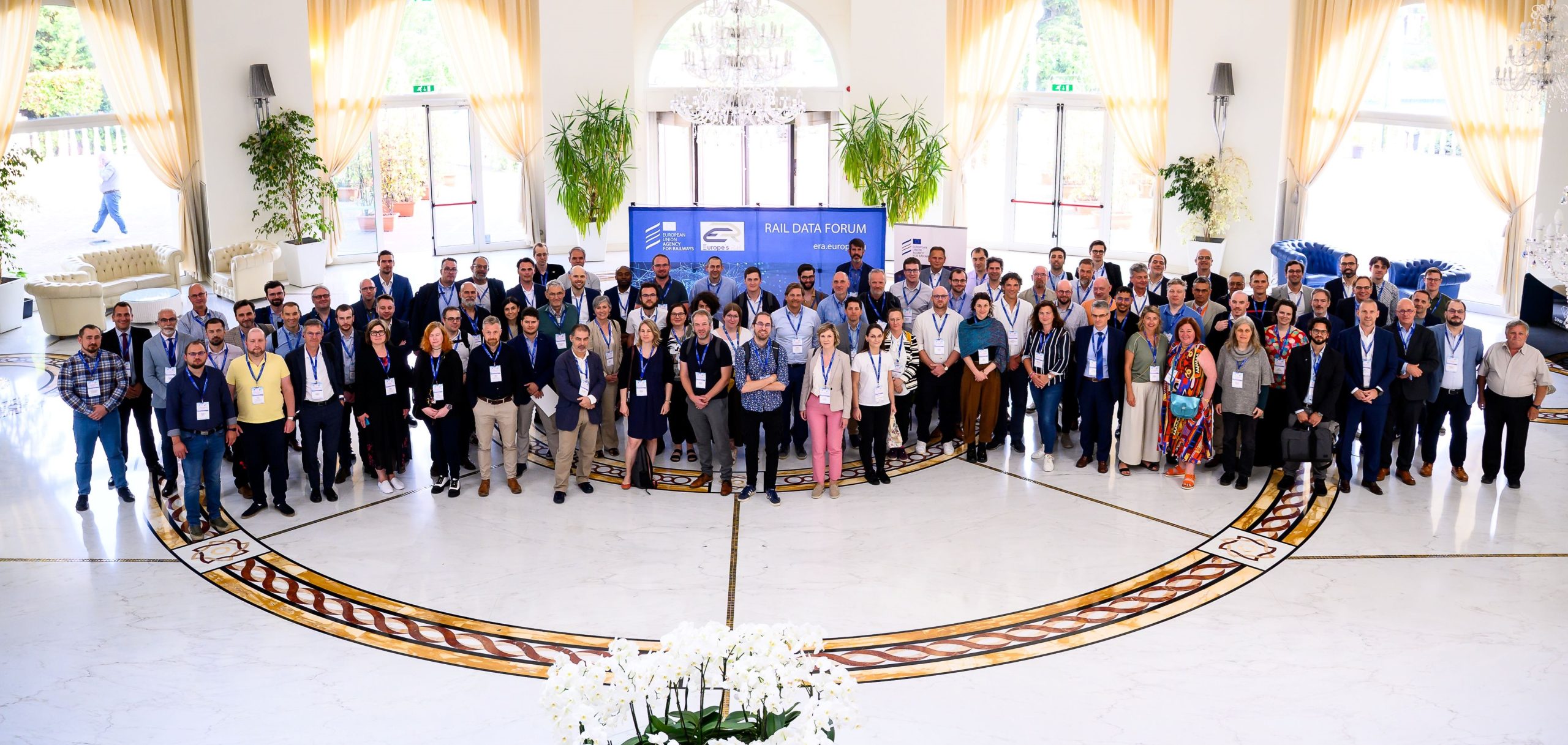
The Rail Data Forum 2025 was a truly massive event organized by ERA, bringing together the entire rail ecosystem. Infrastructure managers like DB Infra GO, Infrabel, ProRail, and BaneNOR presented on asset management systems, safety-related data collection practices, and more. Major rail associations including UIC, UIRR, RNE, and Europe’s Rail Joint Undertaking facilitated workshops on practical data consumption and advanced SPARQL techniques.
Rail and telematics operators were represented by companies like SNCF Reseau, and ENTUR. Regulators and EC bodies like DG MOVE, DG CNECT, and OP were also there, addressing EU policies and initiatives. Siemens and Alstom provided the rail vehicle manufacturers perspective and talked about vehicle authorization processes and how to support vehicle data exchange. And, researchers from institutions like WU Vienna University of Economics and Business and other universities contributed with their academic perspectives on digitalisation and data-driven railway innovation.
Facilitating these advances, leaders in semantic technology presented at various masterclasses and workshops on SPARQL, ontology engineering, data transformation, and validation techniques. They were strongly represented by Graphwise, CogniZone, IMEC, Meaningfy, CapGemini, W3C, Visual Meaning, Kapernikov, TrafIT, and railML. Bringing together all this expertise will inevitably generate innovation, insight, and impact..
Graphwise’s contribution
Building on this collaborative spirit, Graphwise demonstrated practical applications of knowledge graph technology. The forum opened with a SPARQL for Beginners masterclass delivered in three sessions and led by Vladimir Alexiev, our Chief Data Architect.
It covered a variety of resources and topics, and introduced the ERAbot that was developed for the event. ERAbot uses the GraphDB Talk to Your Graph functionality and can answer natural language questions by generating and running SPARQL queries over the ERA ontology and knowledge graph data. This demonstration of using LLMs for building and querying knowledge graphs sparked great interest from workshop participants, showing how semantic technologies can be made accessible to non-technical users.
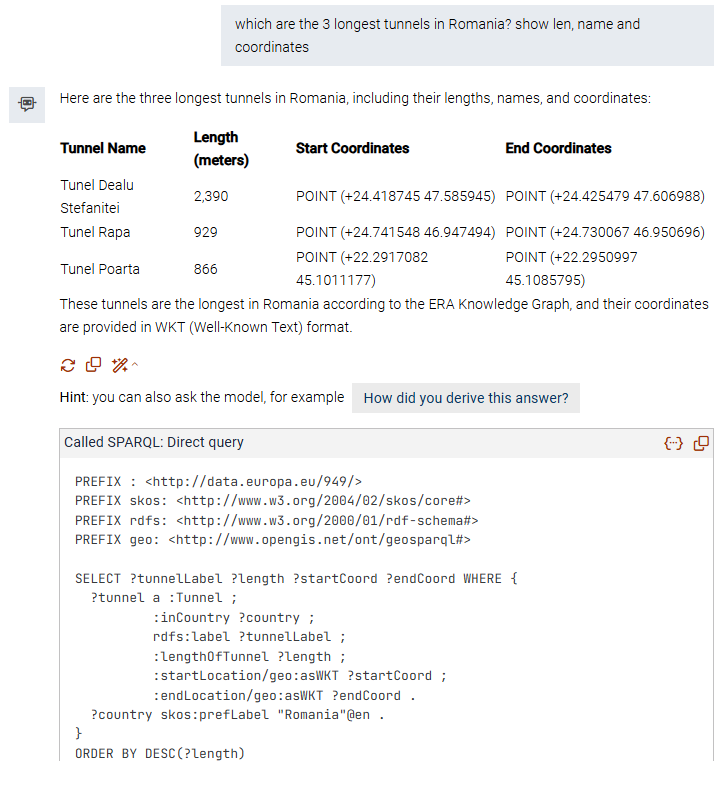
To make ERAbot work effectively, we had to simplify the ERA Vocabulary (ontology). This work builds on the experience we have from our LLM project with Statnett (a state-owned enterprise which develops, owns and operates the central power distribution grid in Norway). The project addresses the challenge of making complex power system data accessible to non-experts as experienced engineers retire. It uses semantic technologies and LLMs to enable natural language interactions with technical data. This work proves that knowledge graphs can democratize access to specialized engineering information while maintaining data accuracy and trustworthiness.
Later we identified a critical maintainability issue in the validation rules of ERA SHACL – the existing system had 73 enumerated property constraints that ran SPARQL queries over 8M times. Our solution, as outlined in Improving ERA SHACL Shapes and Data Flows, reduces this to just 1 constraint that runs SPARQL once, followed by a few cheap SPARQLs per violation. This has a huge positive impact on SHACL maintainability and on validation performance.
We also developed a Visual Graph configuration showing parts of the rail connectivity graph. In this case, it displays the Bulgarian rail network and provides intuitive visualization of complex rail infrastructure data. This semantic foundation enables unified views of assets connected through a shared semantic model, and supports lifecycle intelligence for tracking assets from installation through maintenance to decommissioning.
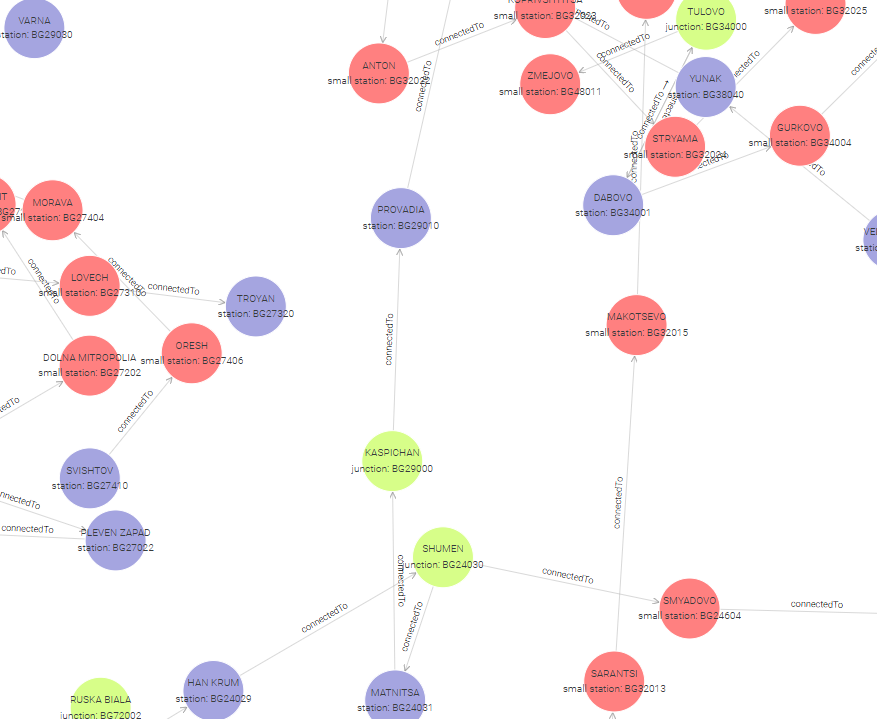
Apart from the masterclass, Graphwise had a stand with our long-time partner CogniZone – a European leader in Semantic Technologies and Linked Data with a proven track record in rail data ecosystems. The two companies are a vendor under the ERA Framework contract for continuing semantic work and development of the REG+ programme to convert all ERA registers to semantic data. Our joint track record includes extending the ERA Railway Ontology and enhancing ERA’s Register of Infrastructure (RINF+) with SHACL validations, flexible data import/export, and advanced visualization. This collaboration helps establish the infrastructure that will support the rail industry’s transition from fragmented legacy systems to AI-ready, semantically integrated asset management.
Another partner from the ERA Framework consortium, Mathias Vanden Auweele, delivered a workshop on Railway Data Modelling. The workshop introduced participants to data modelling and ontology engineering in the railway domain, focusing on how semantic technologies can structure, integrate, and reason over complex railway infrastructure data using the ERA ontology.
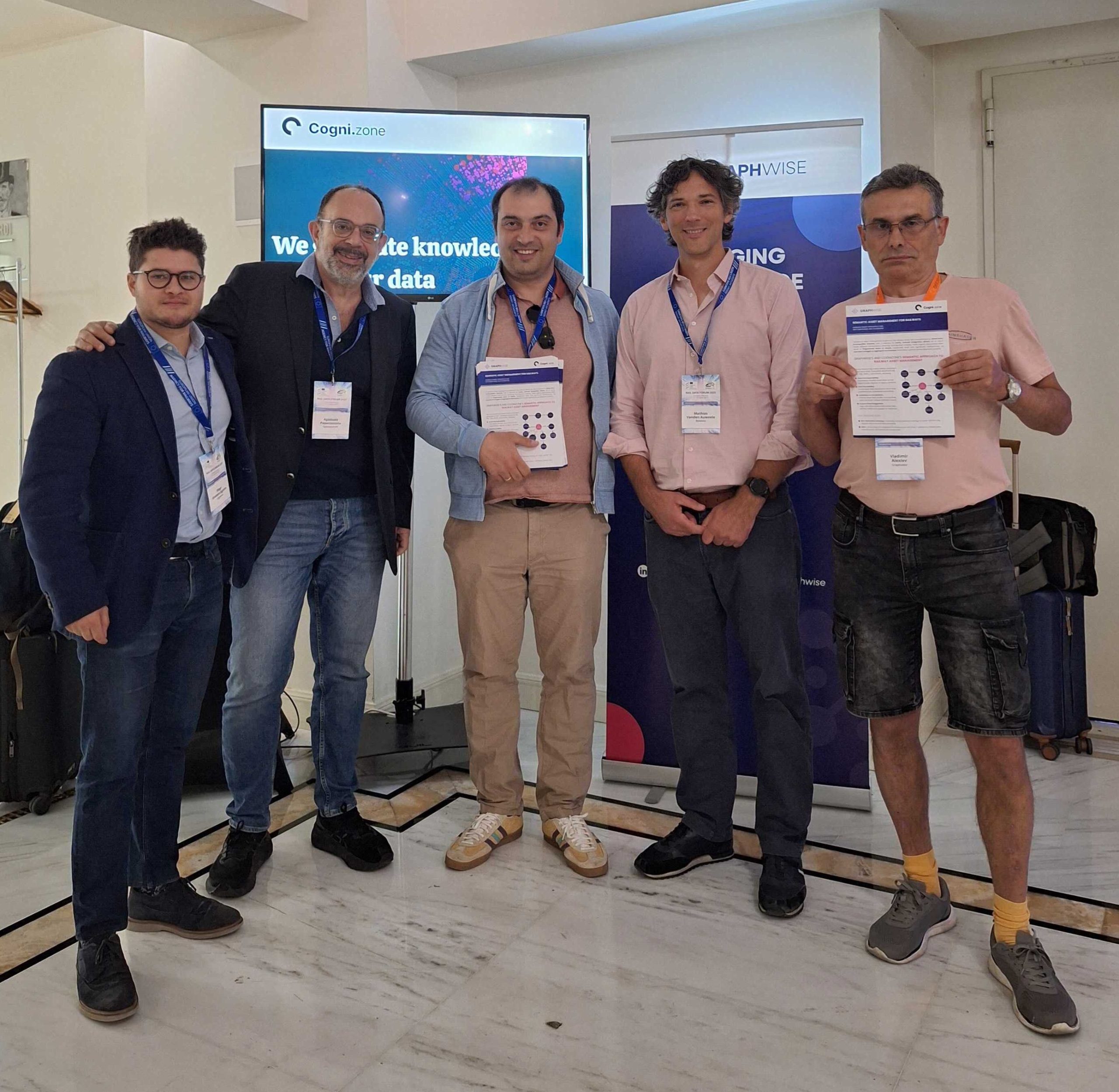
Left to right: Diego Grodent Aguirre and Agis Papantoniu (CogniZone), Borislav Ankov (Graphwise), Mathias Vanden Auweele (MatData working for our consortium), Vladimir Alexiev (Graphwise).
Industry-wide commitment to semantics
The rail community’s commitment to semantization of rail data was strongly reconfirmed throughout the forum. Leadership voices included (Oana Gherghinescu (head of ERA), Chris Carr (head of Operational Data Unit), Kristian Schmidt and Yann Seimandi (DG MOVE), and Hinne J.Y. Groot (Netherlands Ministry of Infrastructure and Water Management), among many others.
Particularly encouraging was seeing that large rail enterprises like DB Infra GO and RNE are now fully on-board with semantic technologies, and are working on use cases involving semantic rail data. This shift from historically cautious positions to active support indicates how the industry has moved from experimentation to implementation.
The packed program of masterclasses, workshops, keynotes, and presentations reinforced the notion that semantic technologies are no longer emerging concepts but essential tools for modern rail operations.
Looking ahead
The Rail Data Forum 2025 demonstrated the rail industry’s commitment to knowledge graphs and semantic technologies as solutions to siloed, incompatible asset management systems. The focus has shifted from adopting new tools to transforming how physical and digital railway assets are managed — enabling data interoperability across systems and supporting smarter infrastructure operations.
We are looking forward to many interesting semantic developments in the rail domain!


